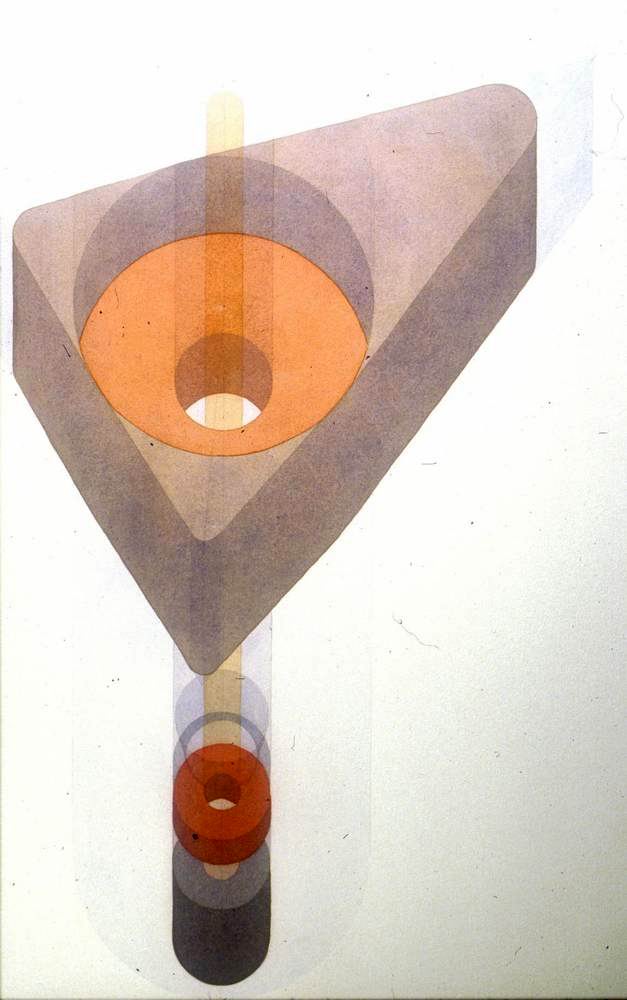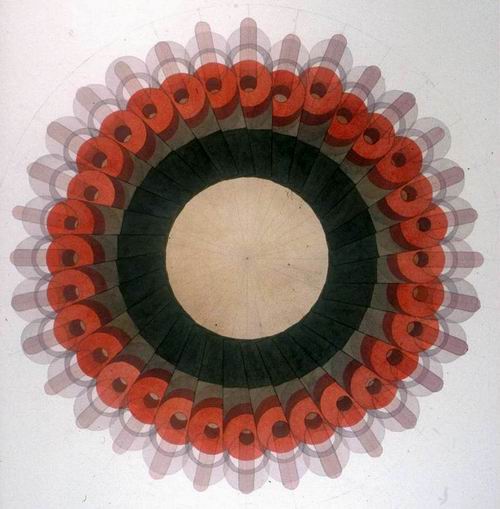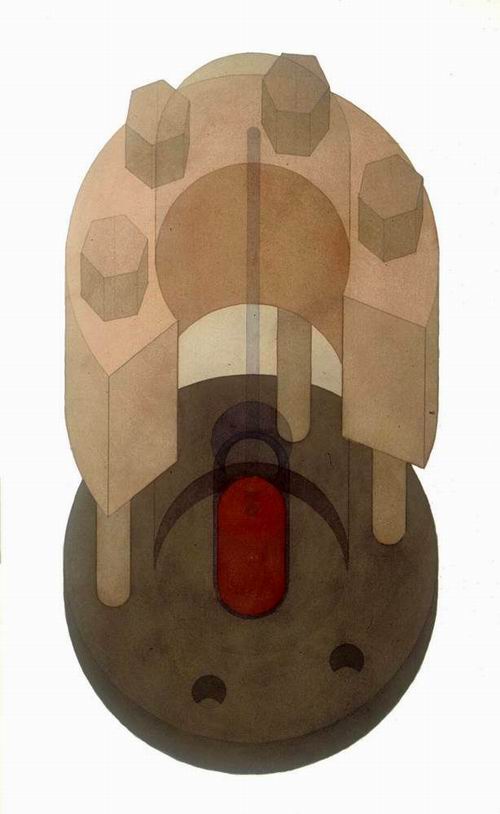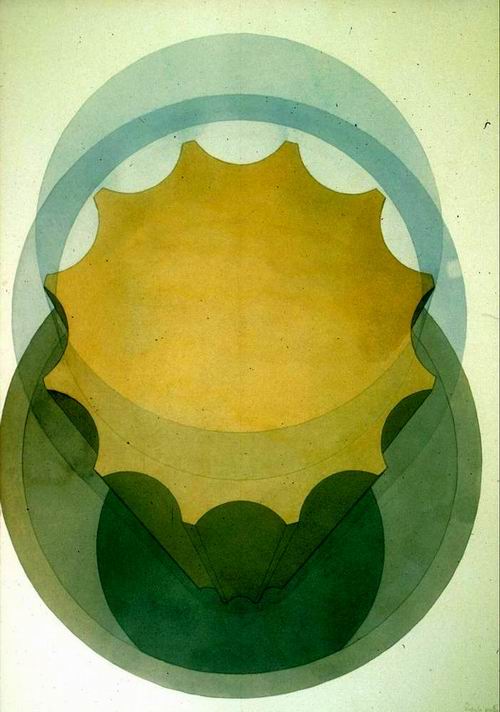
Titles are in Dutch. A kingdom for a translation!

Ontroeringspers N549, 1996. pencil and watercolor on paper 80x60 cm.

Gemoedstonenregulateur N694, 1997, pencil and watercolor on paper 57x76 cm.

Voortreffelijkheidsververser, 1998, pencil and watercolor on paper 80x60 cm.

Hemelsblikvanger, 1998, pencil and watercolor on paper 80x60 cm
Nora Gallery, Jerusalem, November 1999
Galerie Nora, Jeruzalem, november 1999
From the English press release:
Henk Puts was born down a hill in Maastricht, Holland, in 1950, from a mixed Catholic-Protestant marriage. The wedding resulted in his father's excommunication from the Catholic church. The family moved to The Hague, where the future artist learned to speak the local Dutch dialect. He first studied some years philosophy in Amsterdam. Strongly discouraged by his mother, who was an artist, he started to draw only at the age of 23. He moved to Groningen to study art and became a qualified artist in 1980. Finally, after six more years of studies at the Groningen University, he became an art historian. Writing his thesis he had a love affair with the work of the Russian artist El Lissitzky. He became an expert, made a catalogue of his work and wrote texts for exhibitions.
Henk Puts' artistic work deals with cataloging things that have been. His first show was called "1000 Destroyed Drawings": 1000 numbered glass jars on shelves, each containing the leftovers of one drawing or print, destroyed with water in a kitchen blender. A catalogue with full details of all destroyed works was part of the exhibition. His recent exhibition in Jerusalem called "712 Borders" showed full details of each time he crossed a national border, with excerpts from his diary.
As reaction to his own installations, Henk Puts made hundreds of watercolours. He made series of "Suns in Jars" and "Art Processors". Most of them deal with the machines that he used for the destruction of his own works, or with the visual results. Gallery Nora will be the first to dedicate an exhibition to those watercolours. With the geometrical shapes and subdued but powerful colours they show a strong Dutch identity.
Henk Puts has his main residence in Groningen, Holland. He gets grants from the Amsterdam Foundation for Visual Arts, Design and Architecture. Since 1993, however, he has a love affair in Jerusalem that resulted in a great daughter, born in July 1994. His lengthy stays in Israel now exceed those in Holland. He survives mentally by exhibiting and by writing in English for the excellent bilingual art journal "Terminal". The Jerusalem Municipality provided him with a bomb shelter as studio, located in a now ultra-orthodox Jewish quarter above the remnants of the Arab village Lifta, abandoned in 1948. He stresses that he did not go to Israel out of Zionism, and, living on the point in Jerusalem where the areas of Arabs, Jews and ultra-orthodox Jews meet, he often does not know which way to go.


